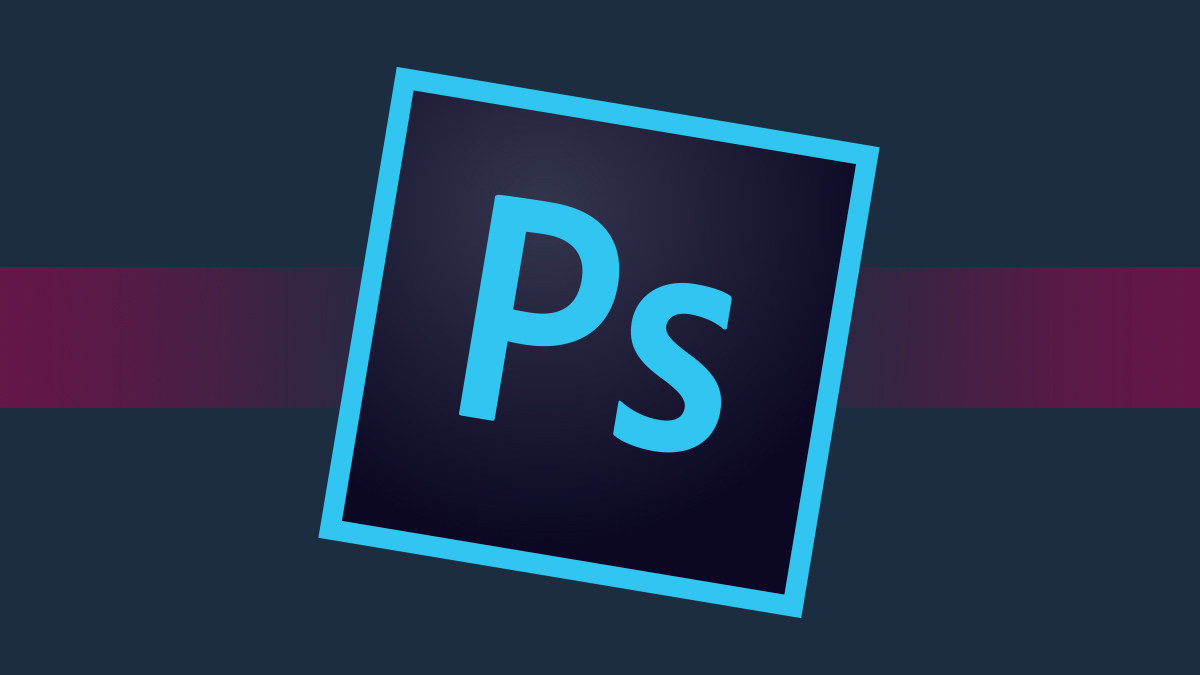7 Reasons Why You Should Learn Photoshop
As an Art Director here at Zion & Zion and as a past graphic design instructor, I know firsthand that design students are some of the hardest working kids on campus. Between slaving all hours of the night on their projects, ruining their coffee table with spray mount, and somehow finding time to work to pay the rent, there seems to be something that gets lost. I went through a really notable design program, and I valued every bit of what I learned. We were taught to be thinkers–that the concept is the most important aspect to your design. This is absolutely true, but so is having the necessary skill set to be able to execute truly great design. I have interviewed countless interns, and I see that if they are assigned to design a logo, they’ve got things covered. A brochure? No problem! Design students tend to know Adobe Illustrator and InDesign like the back of their hands. But when it comes to Photoshop, nine times out of ten, they fall flat. It’s one of those “yeah, I know it… I can color correct a picture” type scenarios. However, I firmly believe there are seven key reasons design students need to make Adobe Photoshop their best friend.
1. Interactive and User Experience design is the future.
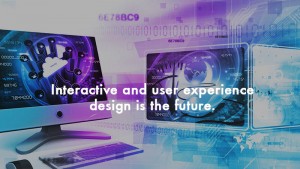
20 years ago, designers were executing print ads, designing annual reports, laying out magazines and newspapers, and creating captivating billboards. The common denominator here is one thing: print. This was a time when being a designer was synonymous with physical printed design. Today, those skills are just as valuable, with probably even more mediums to consider with vinyl graphic applications taking over out-of-home advertising. However, now there is an entirely new realm of design in the interactive space. Everything from websites and online advertising to mobile applications and motion graphics, the opportunities for a designer of today are ever shifting and expanding. While there are still creatives who identify as solely “print” designers, most have found that in order to stay afloat in this ever-changing industry, they must develop their user experience sensitivity and be comfortable in the interactive space. A design student of today should be well versed in all applications of their creativity in order to be the most valuable in this field. Photoshop is the main program for all interactive design projects because it is pixel based like our monitors and phones, optimizes images for web and is the main program which web developers are familiar with when building websites.
2. Not all programs are created equal.
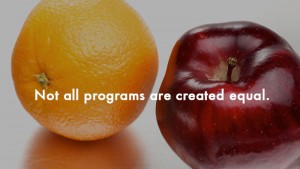
Photoshop is a virtual standard for a reason. Partly because Adobe has monopolized the marketplace, but also because it’s just a really great product. There is no other program that is nearly as robust or capable of endless possibilities like Photoshop. One of the biggest advantages to learning Photoshop is the simple fact that when working with other designers, agencies and printers, everyone speaks the same language. There are no issues with output or compatibility if everyone is using the same program. Sure there are some people who will tout that Quark is more user friendly than InDesign, or that Corel Draw can do everything Illustrator can, however you will soon find out that it’s not your fellow designers making these statements; it’s typically people who have simply dabbled in design. You might think that knowing all of these programs will be advantageous as you venture out to the real world job market, but your time is much more efficiently spent mastering the Adobe Creative Suite than being mediocre at a set of programs that may soon be obsolete.
3. Photoshop is king of the jungle.
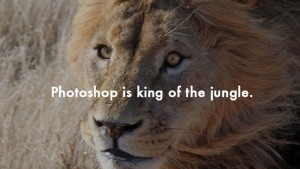
The Adobe programs are designed as a system to yield the best results for your medium. That being said, if you only had time to learn one program, or only had money to buy one program, that one should be Photoshop. While in school, design students tend to get exposed to Illustrator the most with InDesign as a close second. For some reason, most professors choose to skip over Photoshop. This has been baffling to me ever since I was in design school at Arizona State University. There was this elitist sensibility about being able to design using Illustrator only, as if there was some kind of medal for being able to execute your creative in the most difficult way possible. Illustrator is a vector-based program, and Photoshop is raster (or pixel) based. Vector means your design can be scaled to the size of an airplane without losing quality. What newbie designers aren’t being taught is that Photoshop still utilizes vector typography and elements, but is able to also incorporate the use of raster elements and photography as well. So much of design is a combination of all these elements coming together, so it suits designers best to be able to work within Photoshop to execute their designs. I have noticed that a design done in Photoshop versus the other two programs tends to reach the next level and becomes substantially more intuitive and creative in its execution. Why? It’s because you have all the tools at your disposal in one place. You’re not limited by the confines of a vector program that is ideal for just that, vector output. Realistically, all of these programs talk to each other in such a flawless way that they should each be used for their specific output, however it is becoming more and more clear that Photoshop is the king of the jungle.
4. Start early to get ahead of the competition.

In any top design program, you are being taught how to think and become a real visual problem solver. You are learning sensitivity with spacing, overall composition, and successful juxtaposition of the elements within your design. Your workflow includes countless sketches, revisions, and research. Because most design students are taught to execute their ideas in Illustrator or InDesign, their imagery is then confined to photography they have taken or found. In the real world when it comes to design, designers generally have to execute a multitude of creative designs that require photo composition or manipulation, a skill that is reserved for those who know Photoshop well. It’s more than just touching up a model’s skin or color correcting an image; Photoshop allows you to create an image that is completely unique and original, utilizing vector images or photography and icons. If your design program doesn’t encourage you to design in Photoshop, then it is up to you to take the time to learn it on your own, whether through the multitude of online tutorials or by simply creating side projects for yourself just to play around in the program. You will be far ahead of your peers when you graduate if you know Photoshop better than any of the other students in your design program.
5. Create unique concepts from scratch.
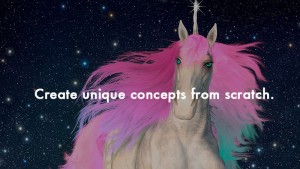
One of the best exercises you can do to begin learning the capabilities of Photoshop is to start with creating a montage of photos. One time in a “Computer Art” class in college I did a series of designs where for each one, I combined five to six images which then created a whole new scene. The more random and fantastical the original images, the more unique the outcome. Take a unicorn, a huge wave, a palm tree and some swirly mystical vector graphics and see what happens! The skills you acquire with a project like that will be incredibly valuable when you have a real world situation with a brand that lends itself to having a little more fun with the imagery.
6. A painter needs more than one brush.
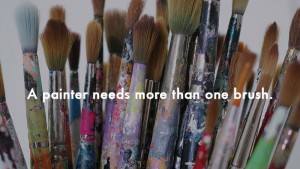
Design students are consistently told that all of their software amounts to tools, but that the real creativity is unique to their own way of thinking. By comparison, a carpenter uses a hammer as one of his tools to build the house, but the structure and layout has all been decided upon as a result of intuition, experience, and planning. Just as Photoshop is one of the tools in your belt, knowing it well, and knowing when and how to use it is essential to being able to be a key employee at any agency or in house position. Even at an intern level, you will need to have a grasp on all three key Adobe design programs, but I can tell you that from all the resume’s I’ve looked at and interviews I have done, that if Photoshop is your go-to program that you know well, you’re already a leg up.
7. There’s more than just the design.
There’s something even more important than being able to make awesome designs. It’s probably the less sexy part of what we do, and that is file setup best practices. It’s crucial that a designer knows how to set up a file for a web banner versus for a brochure, or when to add in bleed and how much. Then there is the importance of organizing your files, labeling layers and grouping them into folders. If you don’t already know what a smart object is, you need to get acquainted fast as that is one of the keys of efficient design practices in Photoshop. All of these things are learned only as you work within the program and delve into real world projects.
As our society, as well as our industry, moves further into more advanced technology, I urge design students to take their future in their own hands, and do what is necessary to be a key asset to your future employer. Thanks to the easy accessibility of these Adobe programs for just about anyone with a computer, our industry is saturated with wanna-be designers. The ones who will stand out will take what they learned from their education about creating great concepts, strong typography and special sensitivity, and expand upon those skills by knowing your tools better than the competition.
